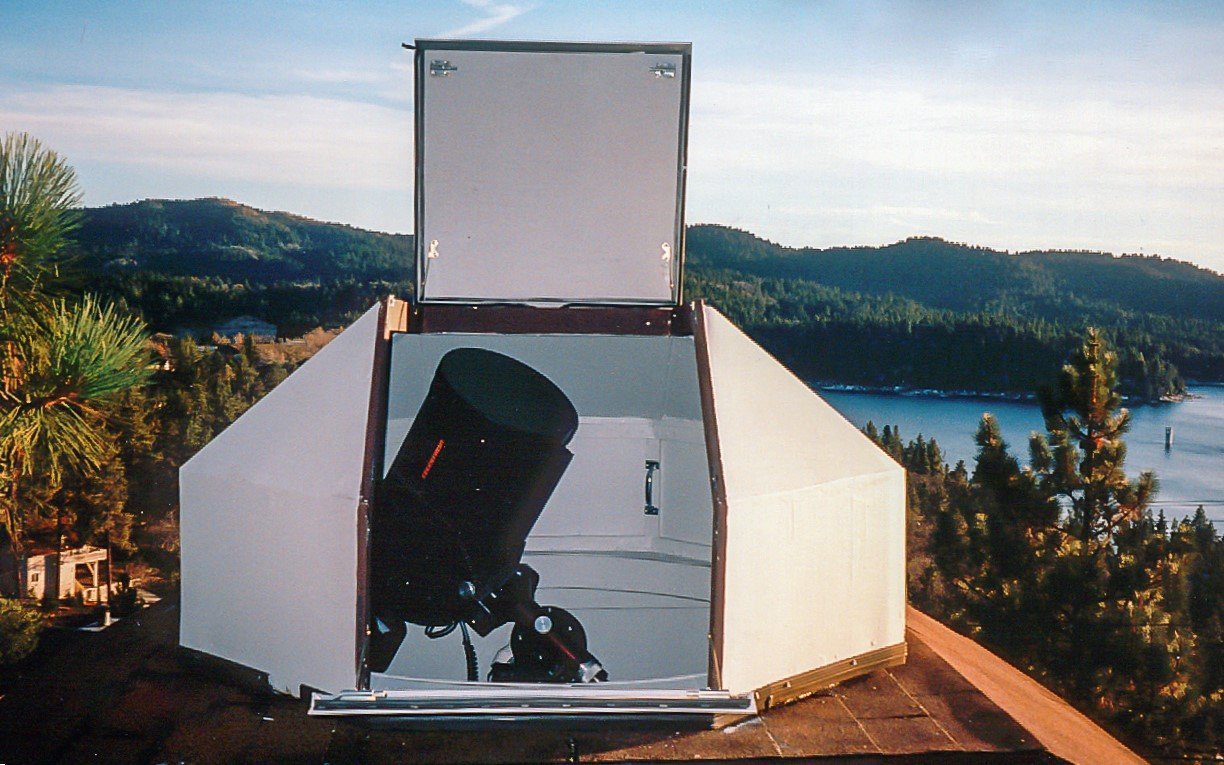Over the years I have used a lot of different cameras and telescopes.
In the 1970s and 1980s, I built my own telescopes and used Olympus OM-1 cameras for astrophotography. I also used a homebuilt cold camera designed to keep the film at extremely low temperatures.
In the 1990s, CCD cameras became available for astronomical research and I built a series of observatories; in Lake Arrowhead, Rancho Cucamonga, at the Riverside Astronomical Society’s observing site, and finally at a purpose-built observatory complex in Landers, California. At all of those I conducted astronomical research on asteroids and variable stars, as well as getting the occasional pretty picture. Those telescopes use astronomical research cameras.
For general daytime photography I have used most major brands, and these days use Canon cameras owning a Canon R5, Canon R10, and a Canon Ra which has been modified for astronomical imaging.

The first telescope I built when I was a teenager was for astrophotography. It evolved into this arrangement in the mid-1970s. I had a camera on the top tube and guided on the stars using the bottom tube with the telescope driven by motors controlled by the homemade electronics.

My second homemade telescope was built in the late 1970s in a friend's machine shop and mounted on a trailer. With help from another friend we eventually put an early electronic positioning system on it. The camera and guiding eyepiece were mounted on the rotating plate at the end of the tube.

My third homemade telescope in the early 1980s was designed for variable star observations.

I eventually started buying commercial telescopes with better pointing and tracking systems. This one was in a home built observatory on my deck in Lake Arrowhead, California.

After I moved to Rancho Cucamonga in the late 1990s and got into asteroid research, I built this observatory off the back of my house.

Needing darker skies for asteroid research, I built two observatories in the mid-2000s at the Riverside Astronomical Society's observing site (GMARS) in Landers, California. I equipment them with larger telescopes and better mounts.

In my second observatory at GMARS I installed a 16-inch telescope.

I eventually moved both telescopes to my own observatory complex in Landers which operates under the name Center for Solar System Studies.

While traveling, such as to Cerro Tololo Inter-American Observatory in Chile, I would bring a small tracking mount and use a telephoto lens.

For casual deep sky photography, I sometimes use my Canon Ra camera which has been modified to show the H-alpha band.

More recently I have gotten an ASI 533mc astronomical camera shown mounted on my 6-inch F/4 telescopes which I can take on trips. The observatories with bigger telescopes are in the background.

A 101mm F/6.3 Borg refractor mounted in my home observatory. It is typically used to monitor stars that change in brightness.

The telescope in my home observatory can be swapped for a solar telescope.